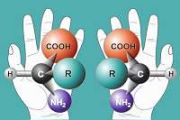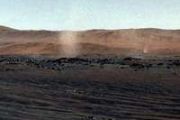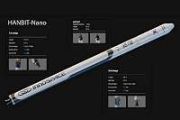
Copernical Team
FAA reveals new system to track space launches
 Rocket launches and spacecraft landings will be tracked and monitored along with airplane traffic to enhance safety in a new program announced Thursday by the Federal Aviation Administration.
The FAA hopes the new space tracking system, called Space Data Integrator, will increase efficiency in the space launch industry by minimizing the need to close airspace around rocket launches for ext
Rocket launches and spacecraft landings will be tracked and monitored along with airplane traffic to enhance safety in a new program announced Thursday by the Federal Aviation Administration.
The FAA hopes the new space tracking system, called Space Data Integrator, will increase efficiency in the space launch industry by minimizing the need to close airspace around rocket launches for ext NASA announces Nuclear Thermal Propulsion Reactor Concept Awards
 NASA is leading an effort, working with the Department of Energy (DOE), to advance space nuclear technologies. The government team has selected three reactor design concept proposals for a nuclear thermal propulsion system. The reactor is a critical component of a nuclear thermal engine, which would utilize high-assay low-enriched uranium fuel.
The contracts, to be awarded through the DOE'
NASA is leading an effort, working with the Department of Energy (DOE), to advance space nuclear technologies. The government team has selected three reactor design concept proposals for a nuclear thermal propulsion system. The reactor is a critical component of a nuclear thermal engine, which would utilize high-assay low-enriched uranium fuel.
The contracts, to be awarded through the DOE' New UK Space Fund aims to make space safer
 One of the biggest challenges facing the space sector is orbital congestion and space debris. There are currently around 3,000 working satellites in orbit, and an estimated 130 million other pieces of debris, including old satellites, spent rocket bodies and even tools dropped by astronauts.
One collision could create thousands of small, fast-moving fragments, damaging the satellites that
One of the biggest challenges facing the space sector is orbital congestion and space debris. There are currently around 3,000 working satellites in orbit, and an estimated 130 million other pieces of debris, including old satellites, spent rocket bodies and even tools dropped by astronauts.
One collision could create thousands of small, fast-moving fragments, damaging the satellites that A star in a distant galaxy blew up in a powerful explosion, solving an astronomical mystery
 Dr. Iair Arcavi, a Tel Aviv University researcher at the Raymond and Beverly Sackler Faculty of Exact Sciences, participated in a study that discovered a new type of stellar explosion - an electron-capture supernova. While they have been theorized for 40 years, real-world examples have been elusive. Such supernovas arise from the explosions of stars 8-9 times the mass of the sun. The discovery a
Dr. Iair Arcavi, a Tel Aviv University researcher at the Raymond and Beverly Sackler Faculty of Exact Sciences, participated in a study that discovered a new type of stellar explosion - an electron-capture supernova. While they have been theorized for 40 years, real-world examples have been elusive. Such supernovas arise from the explosions of stars 8-9 times the mass of the sun. The discovery a A potential new tracer of exoplanet formation
 An international team of astronomers, including scientists from the Max Planck Institute for Astronomy, have become the first in the world to detect isotopes in the atmosphere of an exoplanet. It concerns different forms of carbon in the gaseous giant planet TYC 8998-760-1 b at a distance of 300 light-years in the constellation Musca (Fly).
The weak signal was measured with ESO's Very Larg
An international team of astronomers, including scientists from the Max Planck Institute for Astronomy, have become the first in the world to detect isotopes in the atmosphere of an exoplanet. It concerns different forms of carbon in the gaseous giant planet TYC 8998-760-1 b at a distance of 300 light-years in the constellation Musca (Fly).
The weak signal was measured with ESO's Very Larg LCO discovers activity on largest comet ever found
 A newly discovered visitor to the outer edges of our Solar System has been shown to be the largest known comet ever, thanks to the rapid response telescopes of Las Cumbres Observatory. The object, which is named Comet C/2014 UN271 Bernardinelli-Bernstein after its two discoverers, was first announced on Saturday, June 19th, 2021.
C/2014 UN271 was found by reprocessing four years of data fr
A newly discovered visitor to the outer edges of our Solar System has been shown to be the largest known comet ever, thanks to the rapid response telescopes of Las Cumbres Observatory. The object, which is named Comet C/2014 UN271 Bernardinelli-Bernstein after its two discoverers, was first announced on Saturday, June 19th, 2021.
C/2014 UN271 was found by reprocessing four years of data fr Operations underway to restore payload computer on Hubble Space Telescope
 NASA has identified the possible cause of the payload computer problem that suspended Hubble Space Telescope science operations on June 13. The telescope itself and science instruments remain healthy and in a safe configuration.
The payload computer resides in the Science Instrument Command and Data Handling (SI C&DH) unit. It controls, coordinates, and monitors Hubble's science instrument
NASA has identified the possible cause of the payload computer problem that suspended Hubble Space Telescope science operations on June 13. The telescope itself and science instruments remain healthy and in a safe configuration.
The payload computer resides in the Science Instrument Command and Data Handling (SI C&DH) unit. It controls, coordinates, and monitors Hubble's science instrument Physicists describe Sun's electric field
 As the Parker Solar Probe ventures closer to the sun, we are learning new things about our home star.
In a new study, physicists led by the University of Iowa report the first definitive measurements of the sun's electric field, and how the electric field interacts with the solar wind, the fast-flowing current of charged particles that can affect activities on Earth, from satellites to tel
As the Parker Solar Probe ventures closer to the sun, we are learning new things about our home star.
In a new study, physicists led by the University of Iowa report the first definitive measurements of the sun's electric field, and how the electric field interacts with the solar wind, the fast-flowing current of charged particles that can affect activities on Earth, from satellites to tel Stellar Project announces LaserCube maiden flight mission
 LaserCube, Stellar Project's frst optical communication terminal for small satellites, has been launched into space onboard D-Orbit's ION Satellite Carrier in SpaceX's Falcon 9 Transporter-2 mission. Now, the company is ready to test the payload in orbit.
Padua - Stellar Project space technology startup, launches LaserCube Maiden Flight. The payload hosted on D-Orbit's ION Carrier has lift
LaserCube, Stellar Project's frst optical communication terminal for small satellites, has been launched into space onboard D-Orbit's ION Satellite Carrier in SpaceX's Falcon 9 Transporter-2 mission. Now, the company is ready to test the payload in orbit.
Padua - Stellar Project space technology startup, launches LaserCube Maiden Flight. The payload hosted on D-Orbit's ION Carrier has lift ESA contracts Arianegroup to make a more versatile Ariane 6
 The European Space Agency (ESA), as part of its Ariane 6 Competitiveness Improvement Program, has chosen ArianeGroup to develop and build a complementary stage (kick-stage) for Ariane 6, called ASTRIS, which will enable Arianespace, operator of the new European launcher, to place with even greater efficiency a larger number of payloads in different orbits, or to inject satellites into geostation
The European Space Agency (ESA), as part of its Ariane 6 Competitiveness Improvement Program, has chosen ArianeGroup to develop and build a complementary stage (kick-stage) for Ariane 6, called ASTRIS, which will enable Arianespace, operator of the new European launcher, to place with even greater efficiency a larger number of payloads in different orbits, or to inject satellites into geostation 



























